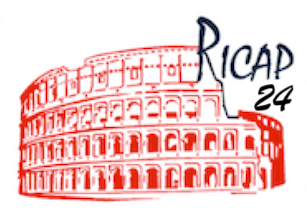Speaker
Description
The European Partnership on Metrology (EPM) joint research project BIOSPHERE aims to develop the necessary instrumentation, methods, and measurement infrastructure to assess how the increasing ionization of the atmosphere, caused by extraterrestrial radiation fields (cosmic rays and solar UV radiation) and amplified by anthropogenic emissions, affects the human and ecological health of our planet. Both electron precipitations of extraterrestrial origin and energetic bursts of protons released from the sun during solar flares or coronal mass ejections have the potential to increase the stratosphere and mesosphere ionization. The variations in atmospheric ionization can significantly affect the biosphere by depleting the ozone layer. Here, cosmic rays trigger electron-induced reactions that lead to formation of free radicals in the atmosphere (NOx, HOx and halogen radicals) which, subsequently, act as catalysts that initiate the breakdown of ozone molecules.
To explore the effects of cosmic rays in the ionization of the atmosphere, the Secondary Cosmic Rays (SCRs) measured on the ground need to be correlated with the flux of incoming parent Primary Cosmic Rays (PCRs) and atmospheric parameters. Both secondary cosmic muon and neutron rates at the Earth's surface vary with atmospheric conditions, particularly ground-level pressure and the atmospheric temperature profile. The temperature effect on muons is complex, influenced by air distribution at different altitudes, and involves two contributions: the positive correlation due to secondary particle interactions and the negative correlation due to muon decay. Muons primarily result from the decay of charged pions and kaons. Increased temperatures reduce atmospheric density, decreasing interaction probability and leading to more decays of pions and kaons, thereby producing more muons. Due to their high penetration capability, muons are less affected by interaction probability changes, resulting in increased surface rates with higher temperatures (positive effect). Conversely, as the atmosphere expands with increased temperature, muons must travel further before decaying, contributing to the negative effect.
The link between SCR on the ground and PCR needs to be determined using high-quality SCR data, incoming PCR fluxes and atmospheric profile parameters. All this should be combined with thorough Monte Carlo simulations to disentangle the interaction between SCR and air masses. In the framework of BIOSPHERE project, a cutting-edge muon detector (DECOS2) was used in tandem with a Lidar for atmospheric profiling, providing a comprehensive set of measurements that allow to explore the effect of atmospheric parameters (pressure and temperature) on SCR propagation. This talk will present data gathered from the DECOS2 muon detector during BIOSPHERE campaigns, emphasizing the methodology and processing tools used to correct SCR flux for atmospheric factors. Integrating diverse datasets, including aerosol and temperature data, enhances our understanding of how atmospheric changes influence muons and other cosmic ray components.

